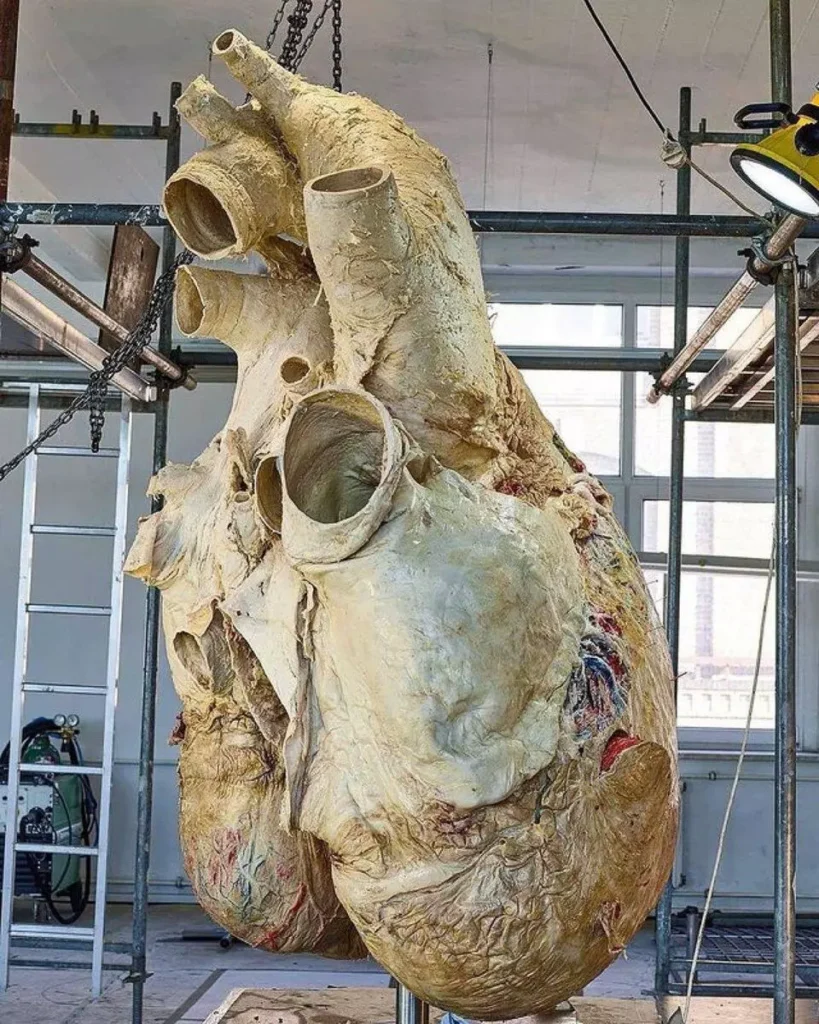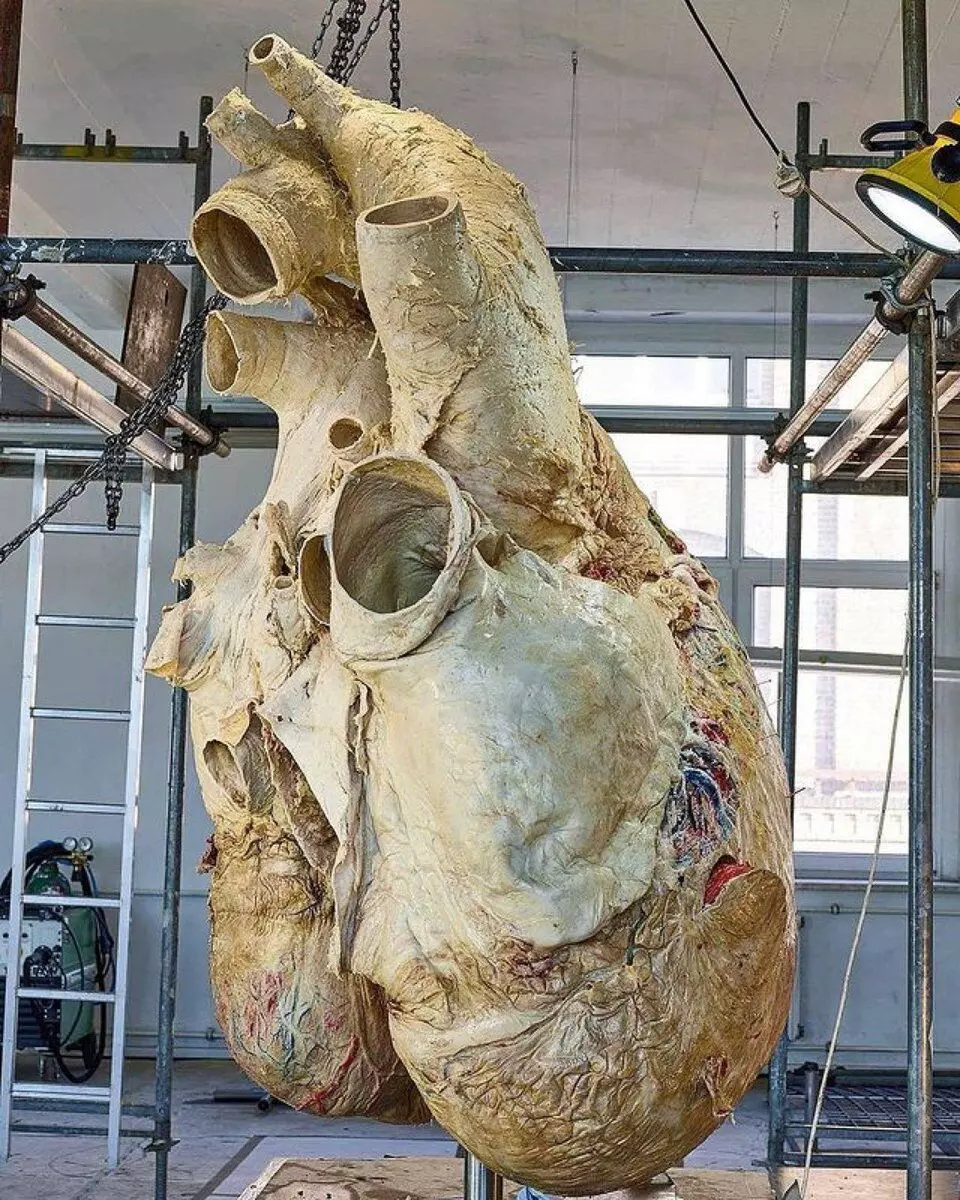
Blue whales are one of the most precious animals because they are the largest and humanity has been connecting with them for centuries. Chairperson of the RPG Group Harsh Goenka recently shared a picture of a real blue whale heart on Twitter.
The specimen is on display at Canada’s Royal Ontario Museum. It was extracted from the carcass of a female blue whale that washed ashore off the coast of Rocky Harbour in 2014. The body was in a good enough condition to allow technicians to preserve it. Leader of the project Jacqueline Miller said the sheer size alone accelerates decomposition. “So it’s remarkable we got to salvage a heart. ‘It took four staff onsite plus myself to push the heart out of the thoracic cavity, through a window created through the ribs, and into a dumpster bag.” This is the first of its kind preservation effort.

The whale heart was put on display in 2017.
According to the World Wildlife Fund, blue whales weigh as much as 200 tons. That is close to how much 33 elephants weigh. Naturally, they have giant hearts. After sharing the picture, Goenka wrote: “This is the preserved heart of a blue whale which weighs 181 kg. It measures 1.2 meters wide and 1.5 meters tall and its heartbeat can be heard from more than 3.2 km away.”
The blue whale population has significantly declined across the world due to commercial whaling activities. Many of the busiest shipping and ferry lanes overlap directly with areas where whales feed, give birth, and nurse their young. They also get caught in the activities of humans while travelling between feeding and breeding grounds. Collision with ships, entanglement in fishing gear, and pollution are known to injure and kill whales. They are now listed as endangered and protected under the Marine Mammal Protection Act.